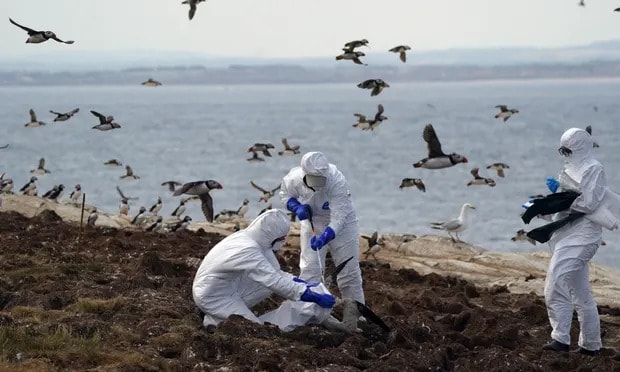In a scene reminiscent of a doomsday movie, the beaches of Valdes Peninsula in Argentina, once teeming with elephant seals, lay barren, littered with carcasses.
This grim spectacle is a stark reminder of an unseen enemy: a powerful strain of avian influenza, now ravaging 320 bird and mammal species globally, including elephant seals.
This avian flu outbreak is unlike any we’ve seen before. The virus has already caused the largest die-off in elephant seals, with an estimated 17,000 pups lost.
Beyond the tragic toll on wildlife, the flu’s relentless spread through migratory routes poses a looming threat to humans. The specter of the virus evolving to jump between mammals, and potentially to humans, is a concern that keeps scientists vigilant.
The impact on poultry farming is already severe, with millions of birds affected in the U.S. alone. The economic fallout is significant, but the ecological consequences are even more alarming. Endangered species are pushed closer to extinction, and entire ecosystems are at risk of collapsing.
The flu’s journey began in commercial geese in China in 1996, eventually finding its way into the wild and spreading across continents.
Now, it’s a global crisis, with devastating tolls: 5,200 common cranes in Israel, over 2,200 Dalmatian pelicans in Greece, and thousands of other birds across Europe and the Americas.
Source: Reuters/YouTube
The virus strikes mercilessly, leaving birds struggling with neurological symptoms. It’s even reached remote locations, impacting brown skuas near Antarctica and a polar bear in Alaska. The threat to unique species in Antarctica is particularly concerning, adding to the challenges of Climate change and other human activities.
This crisis underscores our deep connection with nature. Human actions, like farming practices, can disrupt this balance, leading to dire consequences. For now, human infection is rare, but the potential for a pandemic is a stark reminder of our vulnerability.
Efforts to contain the spread are underway, but the situation is complex. It’s not just about saving animals; it’s about preserving the health of our planet and, ultimately, ourselves. This flu outbreak is a wake-up call, highlighting the urgent need for vigilance and action in the face of emerging environmental threats.
This article by Nicholas Vincent was first published by One Green Planet on 17 January 2024. Image Credit :Jeremy Richards/Shutterstock.
What you can do
Help to save wildlife by donating as little as $1 – It only takes a minute.







Leave a Reply